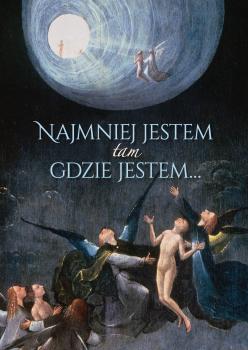Najmniej jestem tam gdzie jestem… : listy Zofii z Vorzimmerów Breustedt z Warszawy i getta warszawskiego do córki Marysi w Szwajcarii (1939-1942)
Keywords:
Zofia z Vorzimmer Breustedt, listy, getto warszawskieSynopsis
IN THE LEAST I AM WHERE I AM: LETTERS OF ZOFIA BREUSTEDT, NÉE VORZIMMER, FROM WARSAW AND THE WARSAW GHETTO TO HER DAUGHTER MARYSIA IN SWITZERLAND (1939–1942)
Vast scientific literature and source materials on the macro- and micro-history of World War II and the Holocaust have been hitherto published. It seems that almost everything has been already written about the tragedies of nations, families and individual persons of this time. Surprisingly, however, little has been published about assimilated Polish educated people of Jewish origin. During World War II, they were sentenced to death twice: because of their origin and intellectual formation. For we should not forget that one of the main objectives of the German occupiers, in addition to murdering Jews and people of Jewish origin, was the decapitation of the Polish intelligentsia, and consequently the “destruction of Poland as a functioning society.”Marcin Kula drawing our attention to this aspect wrote simply: The murder of the Jews was the murder of Polish citizens.
A volume of correspondence Najmniej jestem tam, gdzie jestem. Listy Zofii z Vorzimmerów Breustedt z Warszawy i getta warszawskiego do córki Marysi w Szwajcarii (1939–1942) [In the least I am where I am. Letters of Zofia Breustedt, née Vorzimmer, from Warsaw and the Warsaw ghetto to her daughter Marysia in Switzerland (1939–1942)] becomes part of the anthology of important source texts about the human spirit in “inhumane” times. It is distinguished from other known documents of this type by its unique and complex context of the family life but also of various situations. For example, the fate of the members of the Polish-Jewish-German family in the years 1939–1942 reveals the mechanisms and consequences of the totalitarian Nazi system. is is not only an interesting study of micro-history and a case study, but also an important contribution to the research into the history of the extermination of the Polish intelligentsia of Jewish roots. “The fate of Poles, Jews and Germans in letters from World War II is usually presented using simple stereotypes that make the unlimited variety of individual cases be nothing but a description of a few basic aspects and social roles. How great this simplification is we may realize by reading this remarkable source” (Tomasz Gasowski).
Chapters
-
W oku mikrohistorii .......... 5
-
Nota edytorska .......... 125
-
LISTY Z WARSZAWY I GETTA WARSZAWSKIEGO DO RIEHEN W SZWAJCARII (1939-1942) .......... 137
-
PRELUDIUM. W WARSZAWIE LATEM 1939 ROKU .......... 138
-
PO KATASTROFIE PAŃSTWA POLSKIEGO. W WARSZAWIE POD OKUPACJĄ NIEMIECKĄ (PAŹDZIERNIAK 1939 – PAŹDZIERNIAK 1940) .......... 160
-
W GETCIE WARSZAWSKIM (LISTOPAD 1940 – LIPIEC 1942) .......... 206
-
CODA .......... 278
Downloads
References





